Local pharma giants reaping rewards with new strategies
In the first days of 2024, Hau Giang Pharmaceutical JSC (DHG), Vietnam’s biggest publicly traded drugmaker, saw continuous increases in its ticker, reaching $4.76 per share on January 3. This made it the ninth consecutive price increase session since December 22 (up 14.6 per cent), and the longest price increase chain in its listing history since 2006.
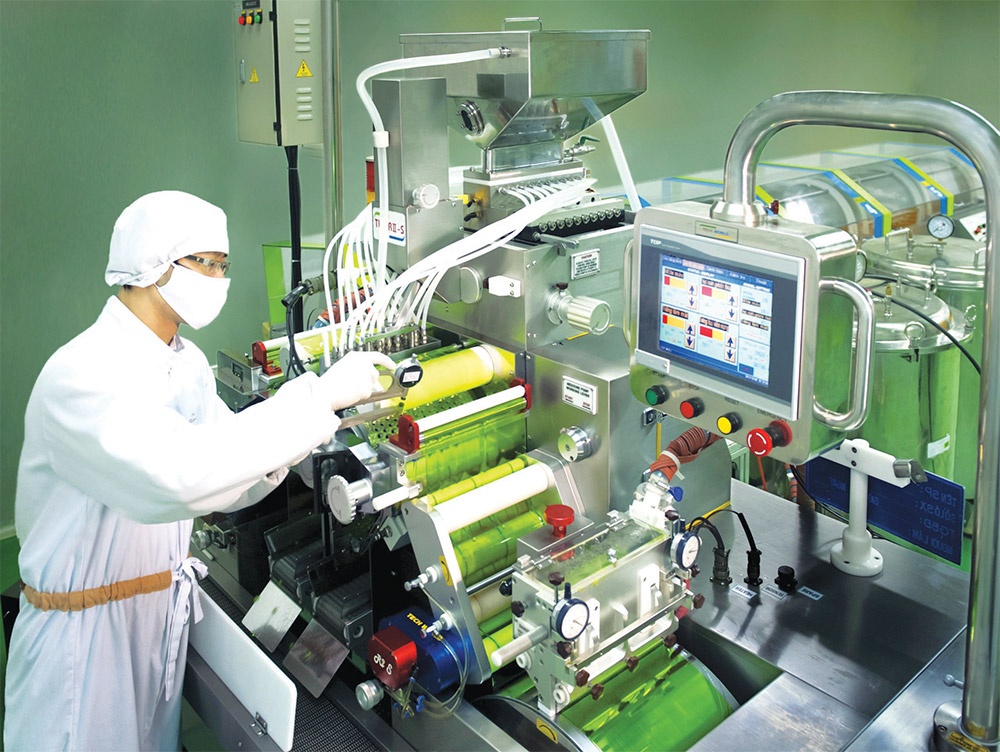 |
| The biggest pharma names are generating plans and money for facilities that adhere to international standards, photo Le Toan |
According to the company, it made revenues of over $211 million and a profit of $49.36 million, meeting the yearly targets and equal to the figures in 2022 when it reached a record high in revenue and profits over its 48-year history.
“This is an encouraging result amid the challenging year with problems in drug bidding and unusual fluctuations in raw material prices and production costs and others,” said Ngo Thanh Hai, lawyer at LNT and Partners. “This result is attributed to positive changes in the company’s strategies towards the international market and investment in the ethical drugs (ETC) segment, which is expected to bring huge growth potential for the company.”
According to SSI Research, the growth drivers of DHG comes from the ETC and export channels, with strong support from controlling shareholder Taisho, one of the largest pharma firms in Japan. Over the past few years, DHG has upgraded a number of production lines to international standards in order to enter more international markets.
As a result, its average export revenue has maintained a growth rate of nearly 20 per cent a year, rising from $2.1 million in 2017 to $4.93 million in 2022. In 2022, revenue from the ETC channel only accounted for 13 per cent of the company’s total revenue of self-manufactured products, but has grown by one-third compared to 2021. In 2023, the rate increased to 20 per cent.
“Taisho wants to create products in Vietnam and bring them to Asia, and to the markets where Taisho has subsidiaries and sales systems. We are looking at processing generic products for Japanese businesses because the labour cost is very high in Japan,” said Toshiyuki Ishii, new general director of DHG.
The company currently operates two factories with a designed capacity of 7.5 billion units per year, with the main products being antibiotics, analgesics, and fever reducers. The company has met WHO-GMP standards, the basic standards applied to domestic factories, while some tablet and effervescent products meet Japan-GMP standards.
Its beta-lactam factory, which started construction in 2022, is expected to operate from this year, helping the company increase its ability to win ETC bids and export to other markets, especially Europe.
Stronger shifts
According to IQVIA’s fourth quarter 2022 report, the value of Vietnam’s pharmaceutical market reached $7.9 billion, an increase of nearly 30 per cent on-year. Of which, the ETC segment, or the hospital channel, accounts for 34 per cent of the market and is forecast to grow in the long term thanks to the coverage of universal health insurance.
This is also pressure forcing DHG and other pharma businesses to urgently upgrade production lines and build more factories of EU-GMP standard.
Moreover, the growing competition in the retail pharma segment, or over-the-counter (OTC), and the Ministry of Health’s (MoH) policy to tighten management of antibiotic sales has also affected local pharma firms in recent years.
Like DHG, other top major drugmakers have been performing similarity in Vietnam. It was deemed a strong year for Traphaco, the country’s second-largest publicly traded drugmaker, as it made estimated consolidated revenues of $103.37 million and profit of $12.44 million, equivalent to the 2022 figures.
During the year, the firm focused on strongly making investment in research and development of new products, especially modern drugs, generic drugs, bioequivalent drugs, and technology transfer from Daewoong.
Traphaco’s trend towards tech transfer and the western medicine segment has been felt since a group of major South Korean shareholders took control in 2021.
The company also promoted digital transformation during the past year. It cooperated with Rieckermann to complete a GMP-EU feasibility assessment for Traphaco Hung Yen factory to have a basis for consideration into investing in a GMP-EU modern medicine line in the near future to tap into the potential of the ETC channel.
Elsewhere, Imexpharm, the country’s fourth-largest publicly traded drugmaker, is also focused on the development of EU-GMP factories. In the third quarter of 2022, it put into operation its third EU-GMP factory in the southern province of Binh Duong.
It now owns the largest number of production lines meeting EU-GMP standards in the country with 11 lines at three factories. Imexpharm became the first company to meet GMP-ASEAN standards in Vietnam.
The change in strategies has enabled the company to perform more efficiently. Over January-November last year, it made net revenues of $75.52 million and before-tax profit of $15.2 million, up 23.2 per cent and 36.2 per cent on-year, and surpassing the yearly targets by 2.2 per cent and 3 per cent, respectively.
Imexpharm is now a franchising and outsourcing partner for many of the world’s top pharmaceutical corporations such as Sandoz, Sanofi-Aventis, Pharmascience, and DP Pharma. It has seven products sold in Europe.
General director Tran Thi Dao said, “Imexpharm’s investment strategy is to anticipate high-value pharma products. Improving product quality in line with European standards gives the company the opportunity to compete with imported products.”
This shift has been reflected in its business results and distribution structure in recent years, especially when SK Group of South Korea invested in the company in 2020, and increased its ownership to 65 per cent in 2022. By the end of September last year, its proportion of ETC drugs increased to 42 per cent.
New year’s ambitions
Currently, domestic enterprises mainly produce generics. Meanwhile, drugs of the brand-name, innovative, or special treatment segments are mostly in the hands of foreign-invested enterprises. They hold a market share of about 50 per cent in terms of value in this segment, while the ETC channel accounts for 70 per cent of pharmaceutical market value.
As shown in data from the Drug Administration of Vietnam under the MoH, in the first half of 2023, the total value of winning drug bids increased 85 per cent to $1.16 billion compared to the same period in 2022. In particular, the winning bid value of foreign drugs reached $865 million, accounting for 75 per cent.
Rong Viet Securities (VDSC) assesses that the total winning bid value of foreign-made drugs in the ETC channel is still threatening the market share of domestically made drugs. However, domestic businesses still have drivers to grow and compete with foreign drugs if they ensure treatment ability, supply capacity, reasonable drug prices, and supporting policies, including the MoH prioritising the use of domestic drugs to save money for the Social Insurance Fund.
VDSC added that the OTC channel will decelerate in 2024, while the ETC channel will grow thanks to newly issued policies on medical exams, treatment, bidding, and more besides.
Seeing high growth potential of the ETC and export channel, Vietnamese pharma firms have set robust plans for 2024. Traphaco aims to maintain the number-one position in oriental medicines, and develop western medicines. It targets consolidated revenues of over $113 million and consolidated after-tax profit of $13.25 million, up 6.1 and 6.4 per cent on-year, respectively.
To achieve such goals, the company will focus on reviewing and rebuilding the overall policy for OTC sales; increase investment in activities to develop new western medicines, oriental medicines, and provide new services; enhance the development of generics and bioequivalents; and build and equip modern tech equipment, expand research laboratories, and much more.
DHG in late 2023, meanwhile, announced that it targets to make revenues of $219.4 million, up 4 per cent on-year, while before-tax profit is aimed at $45.56 million, a slight on-year fall due to its focus on investments for the future development as well as reduced bank interest rates.
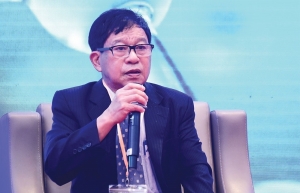 | Pharma innovation can come from global experience Innovation has become an inevitable trend in the pharma-healthcare sector, which requires new approaches to tap into its potential and encourage stakeholders to join in. Trinh Van Lau, chairman of the Vietnam Pharmaceutical Companies Association, talked to VIR’s Tung Anh about the factors in need to achieve its long-term vision. |
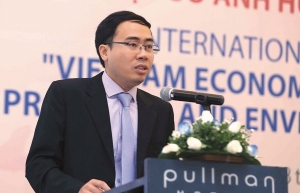 | Opening the domestic arena to pharma distribution Vietnam’s pharmaceutical market is one of the fastest growing markets in the world. However, although the market is growing rapidly, production capacity can only meet about half of domestic demand. |
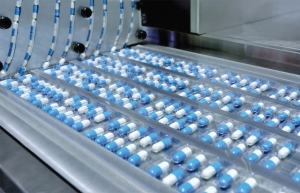 | The way out for pharma distribution Vietnam needs to open up its pharmaceutical distribution and logistics activities, but such changes will take time. |
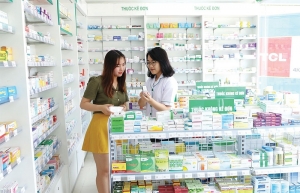 | Fluctuations felt in pharma retail sphere The race in Vietnam’s pharmaceutical retail industry is becoming a tough arena for major players. |
What the stars mean:
★ Poor ★ ★ Promising ★★★ Good ★★★★ Very good ★★★★★ Exceptional
 Tag:
Tag:
Themes: Healthcare Platform
- Takeda Vietnam awarded for ongoing support of Vietnam’s sustainability efforts
- Self-care signals shift towards sustainable healthcare
- DKSH to acquire Vietnamese healthcare distributor Biomedic
- Two national hospitals expand capacity with new facilities
- Vietnam moves to enhance disease prevention, equity, and sustainability
Related Contents
Latest News
More News
- Takeda Vietnam awarded for ongoing support of Vietnam’s sustainability efforts (December 31, 2025 | 21:00)
- Vietjet chairwoman awarded Labour Hero title (December 29, 2025 | 13:06)
- How to unlock ESG value through green innovation (December 29, 2025 | 10:03)
- AI reshapes media and advertising industry (December 29, 2025 | 08:33)
- FPT and GELEX sign deal to develop blockchain tech for global markets (December 29, 2025 | 08:29)
- Vietnam’s GDP forecast to grow by 9 per cent in 2026 (December 29, 2025 | 08:29)
- Women entrepreneurs are key to Vietnam’s economic growth (December 29, 2025 | 08:00)
- Vietnam's top 500 value-creating enterprises announced (December 27, 2025 | 08:00)
- The PAN Group shaping a better future with ESG strategy (December 26, 2025 | 09:00)
- Masan Consumer officially lists on HSX, marking the next phase of value creation (December 25, 2025 | 13:20)























 Mobile Version
Mobile Version